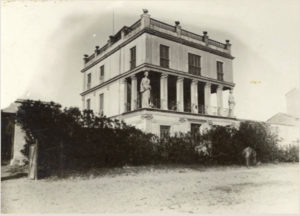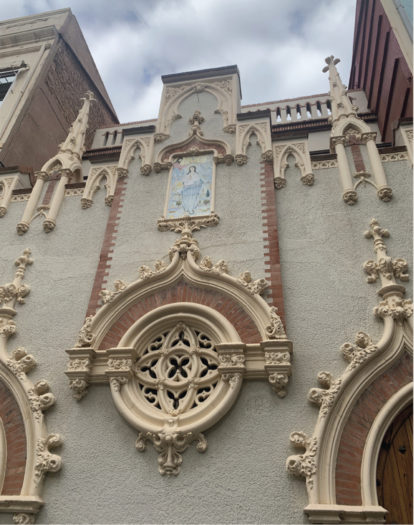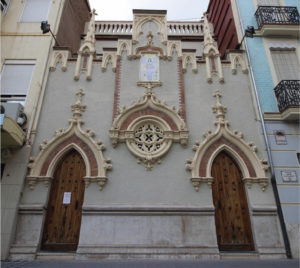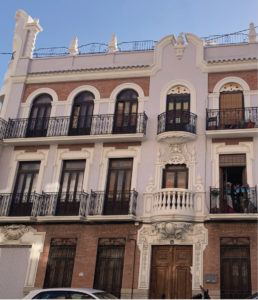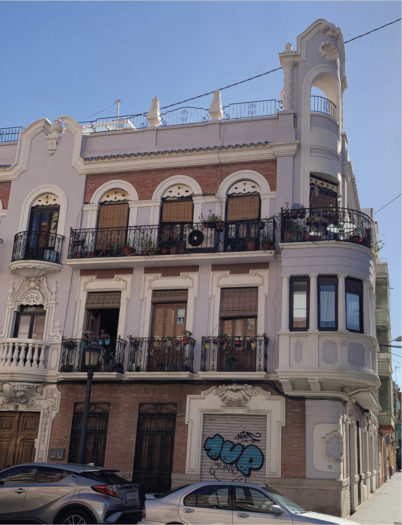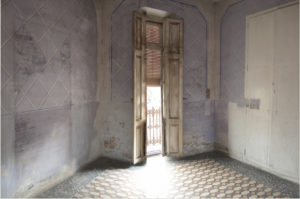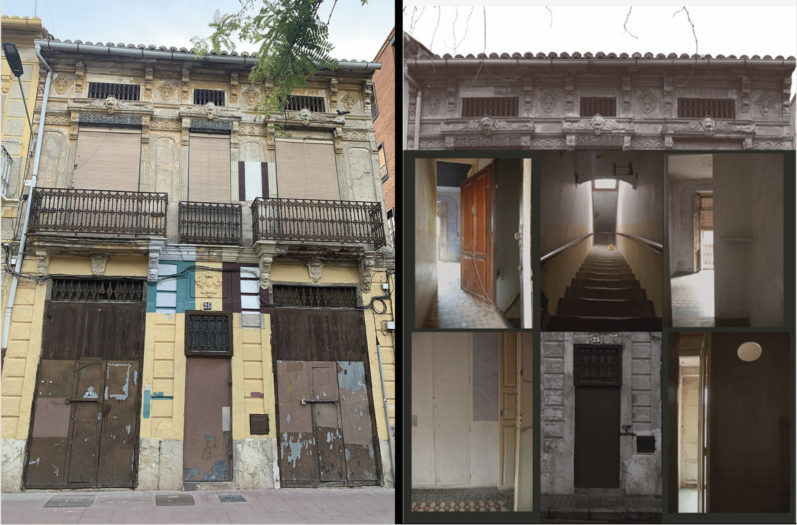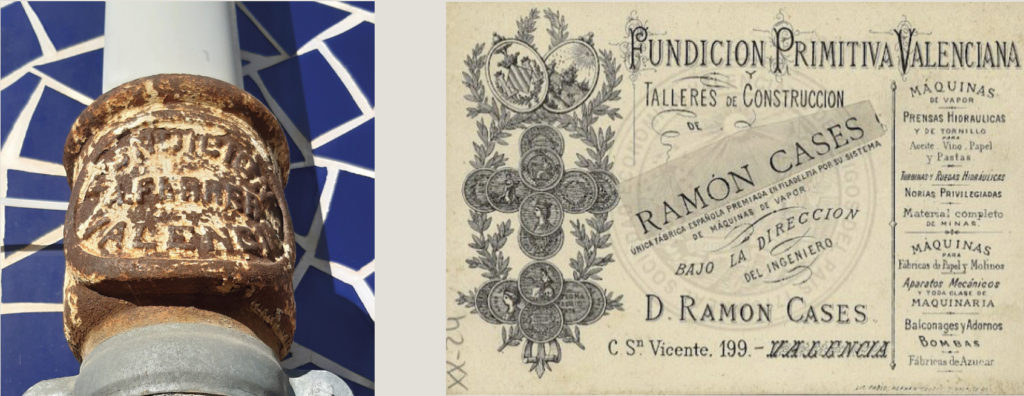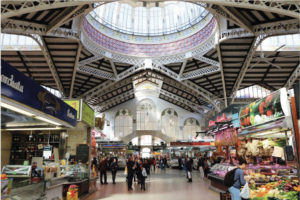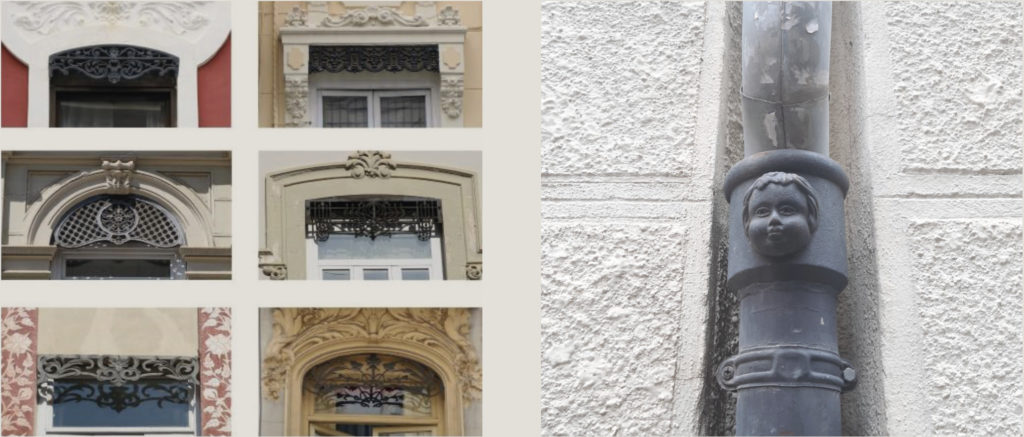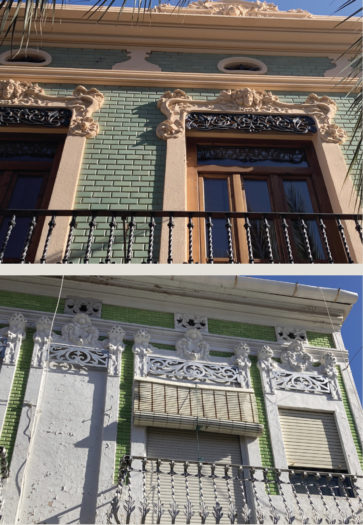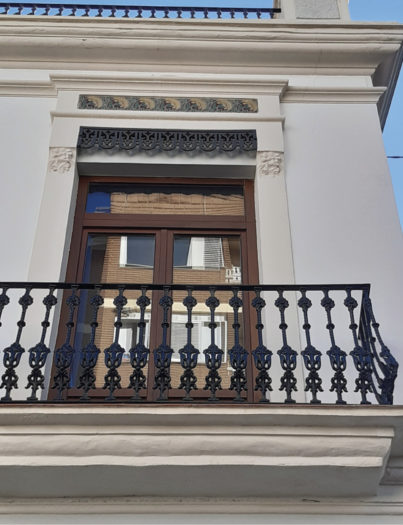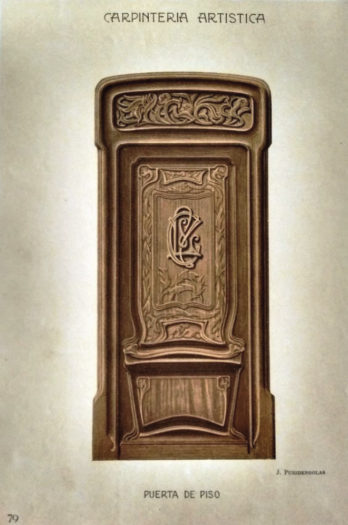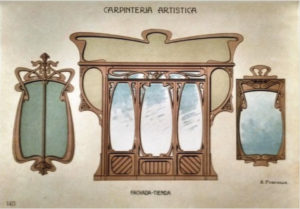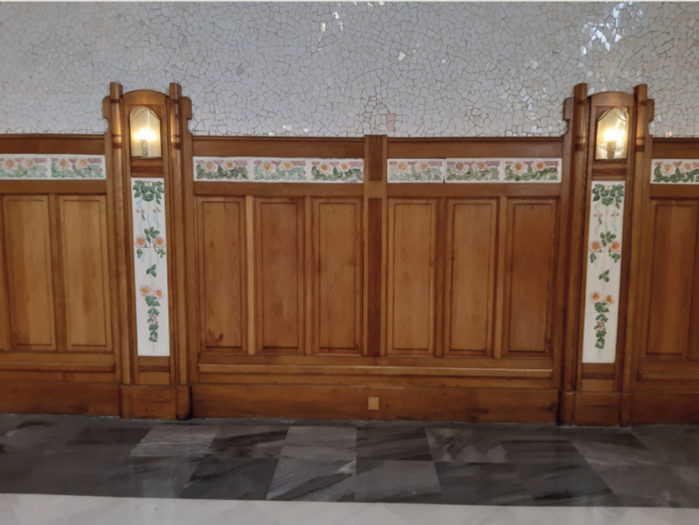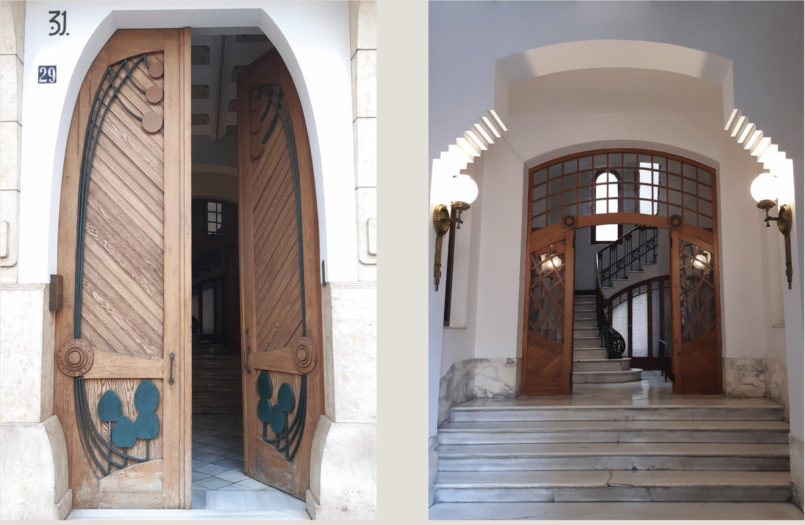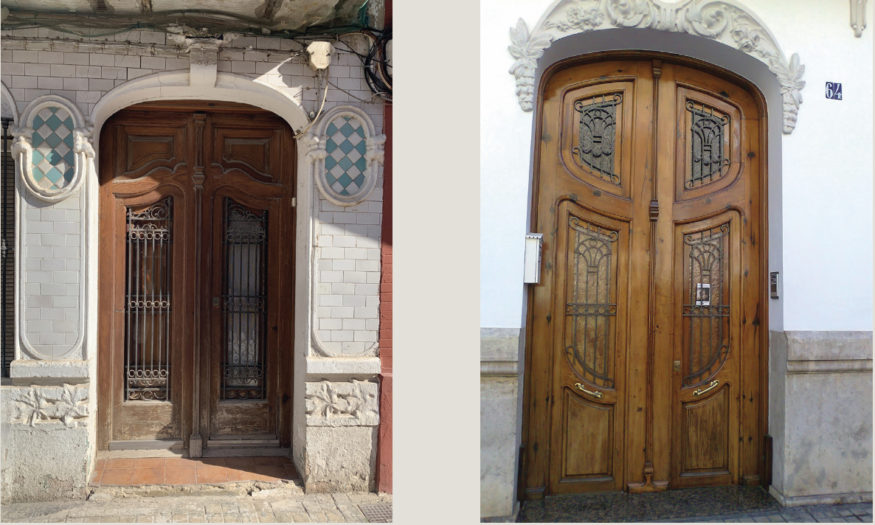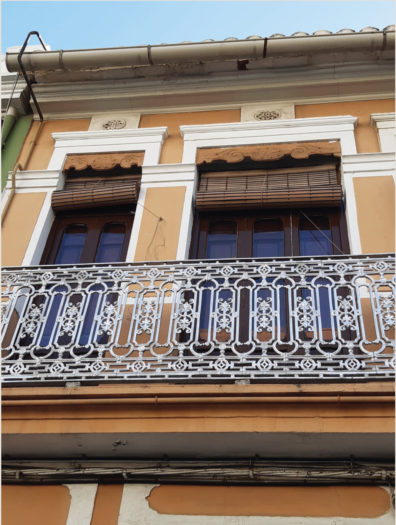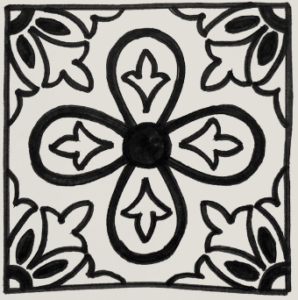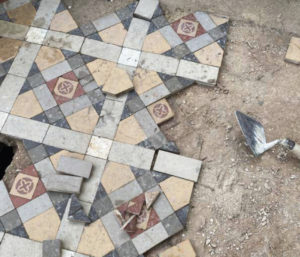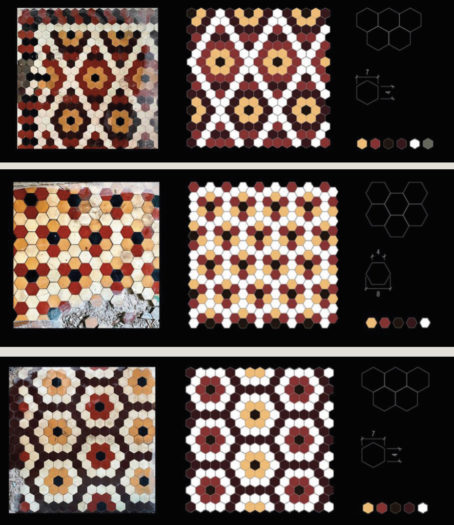1. GENERAL CONTEXT
The urban fabric of the Cabanyal-Canyamelar neighbourhood is characterised by its marked orthogonal grid. This regular grid of its streets and avenues, has its origin in the alignments of shacks of the original nucleus and in the result of urban plans after the important fire of 1796. Through these plans, the reconstruction of the neighborhood began, grouping the buildings in elongated alignments parallel to the coast. Today, this grid still endures, drawing the alignments and axes of the neighborhood.
Within this urban fabric, it is necessary to value the functioning and role of the facades of the buildings: it is the visible part of the houses, which is directly related to the public thoroughfare and in which the characteristics, tastes and habits of the families that inhabit them are reflected.
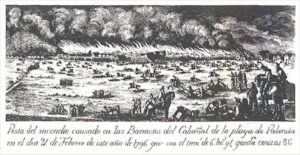
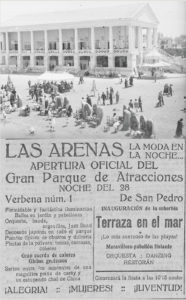
In the evolution of the Cabanyal, the urban plan of the architect José Serrano of 1840 acquires special relevance. In this plan, Carrer de la Reina is laid out as the main axis of the nucleus. It will concentrate the main leisure buildings and homes of wealthy families in Valencia and Madrid, who since some decades before, already liked to “take the waters” and enjoy social life on the Cabanyal beach.
This new phenomenon had important repercussions from a social, economic, urban and architectural point of view: it led to the proliferation not only of housing for these wealthy families, but also of a wide repertoire of infrastructures that significantly modified the seascape.
Another fire, in 1875, caused almost all of the Cabanyal huts to be replaced by brick houses for families in the neighbourhood. Since then, and under the guidance of the architect Víctor Gonzálvez, the master builder Tomás Cardona and the draughtsman Vicent Nicolau, the emergence of facades with architectural ceramics begins.
Of the 700 protected houses of Cabanyal-Canyamelar, 300 show architectural tiles on their wonderful borders.
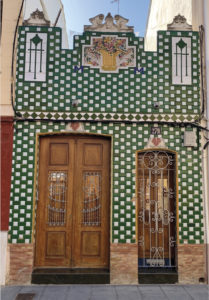
2. PRODUCTION / CHARACTERISTICS
Most of the houses in El Cabanyal not only had the house – which occupied the rooms on the upper floor – but also needed the ground floor as part of their business, workshop or for agricultural use. For this reason, a good number of houses have two heights plus the space under cover. The composition of the facades is based on a traditional basic scheme, with one or two hands:
+ Base or plinth, made of stone, tile or countertop, to alleviate the effects of moisture.
+ The body of the façade, from the top of the plinth to the cornice. It can be painted (in which white and blue predominate) or covered with ceramic tiles or tiles. It is also common to use decorative countertops in eaves, under cornice, under balconies, on the plinth or on the jambs. The balconies are made of wrought iron and the exterior carpentry is made of wood.
+ In the upper part of the facades, oculi are opened assiduously that serve as a ventilation point on the roof.
+ The roofs, mainly inclined of gabled with curved tiles. In many cases, the roofs are hidden behind the finishes of the facades with decorated parapets or balustrades.
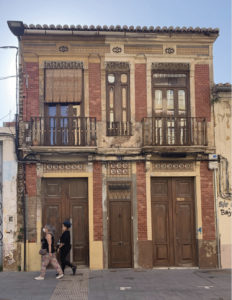
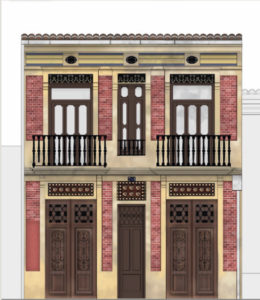
Facade of Escalante Street, 211 Left, current appearance. Source: Eva Bravo.
Right, drawing of the restored façade according to Paula Carabal Maestro.
Source: Paula Carabal Maestro (2020-2021): Análisis histórico y tipológico del barrio del Cabanyal (Valencia). Proposal for the conservation and restoration of traditional facades.
The compositions and characteristics of the tiles, moldings and tonalities used on the façades of the Cabanyal, make this set a collection of the late s. XIX and early s. XX unique in Europe.
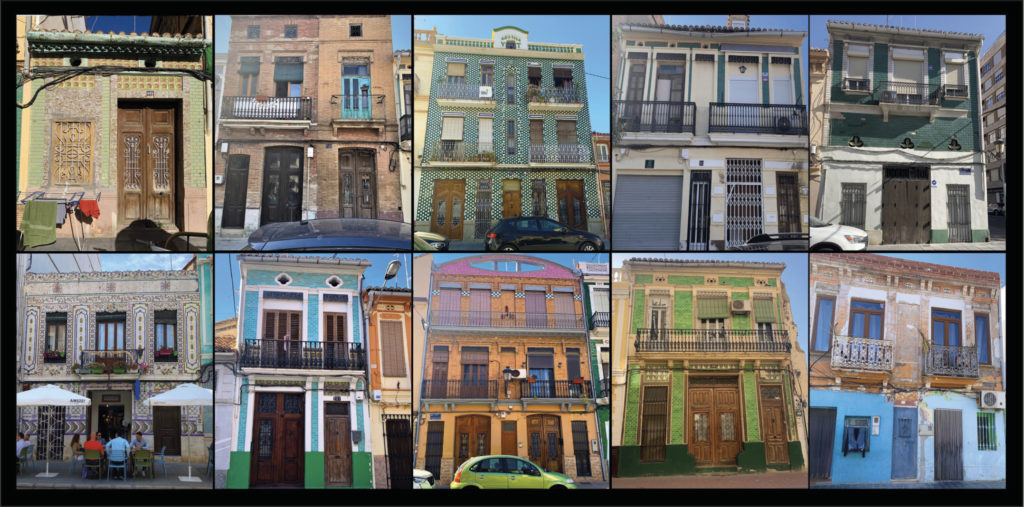
3. EXAMPLES OF THE CABANYAL
The house of blue diamonds and rhombuses (C/ Escalante, 308)
Example of a house of modest dimensions, but enriched with a border that presents a great diversity of decorative elements, although it does not preserve some of its original elements.
Its composition is of a single-family house of two heights and scheme in one hand: the ground floor is covered with white enamelled tiles, in which oval plaster moldings with white and turquoise rhombuses are opened that give it great uniqueness. On the upper floor part of the decoration has been lost: the original white and red tiles that covered the narrow space on both sides of the balconies, which are crowned by a border of corrugated plaster with shield, have not been preserved. On this, made with ceramic mosaic, two geometric roses show. The finish is another of the most excellent parts of this house, with a curved balustrade outlined with drops and three square corbels.
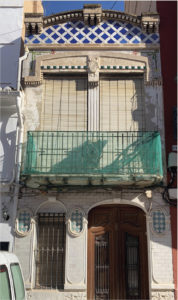
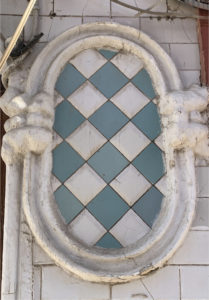
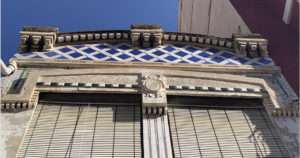
The yellow house at 77 Sant Pere Street
Symmetrical and harmonious composition with two hands in this house built in 1928. On a small tiled plinth, the ground floor has a false padding while the first floor shows a continuous smooth coating, interrupted by the horizontal molding that runs through it at the height of the lintels of the balconies. It is topped with a blind sill, which does not reveal its flat roof.
In this example the decoration is simple, based on the bichrome achieved by the moldings that surround the openings. Although its current state of conservation has mainly affected the carpentry of some openings, which are blinded, it still has many original elements.
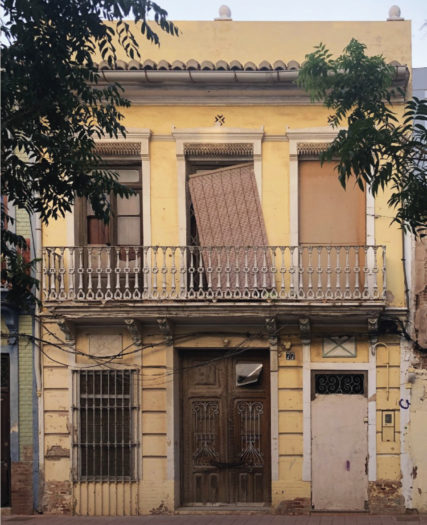
The house of vases and gargoyles (C/ Progrés, 262)
Although built in 1917 on one floor, its façade reaches a certain height thanks to its large balustrade.
It is a magnificent example of different combinations of architectural ceramics, incorporating elements that make it very particular: such as the combination of white and light blue tiles at the top and light green and white at the bottom, both separated by a zigzag mosaic border. Also in mosaic, two columns of scales are made until reaching the border of roses that runs horizontally. Hence the balustrade decorated with 4 mosaics of vases and among these, the figures of 3 gargoyles that collect the waters from the roof stand out.
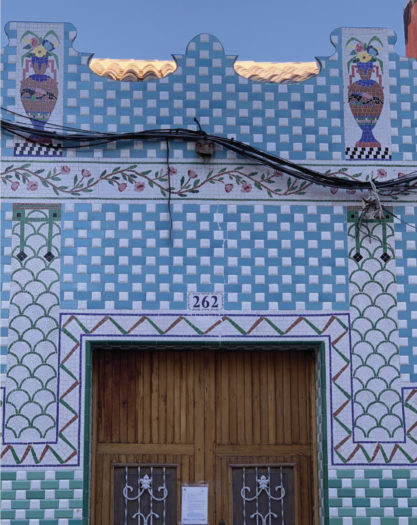
The magnificent state of conservation of this border is marred by the electrical wiring lianas that cross it. (A fact that unfortunately is repeated in many other protected houses of the Cabanyal).
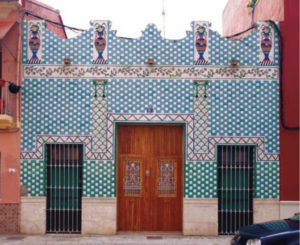
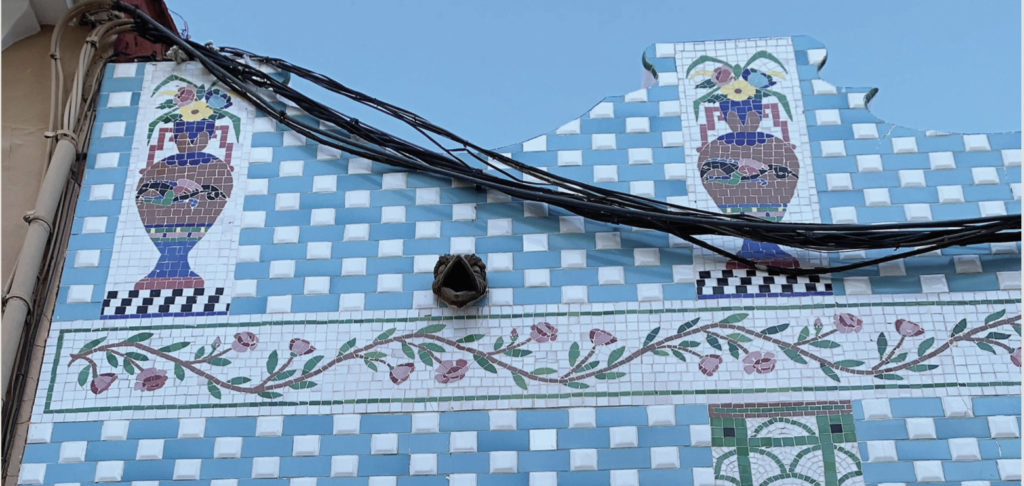
Source: Eva Bravo




